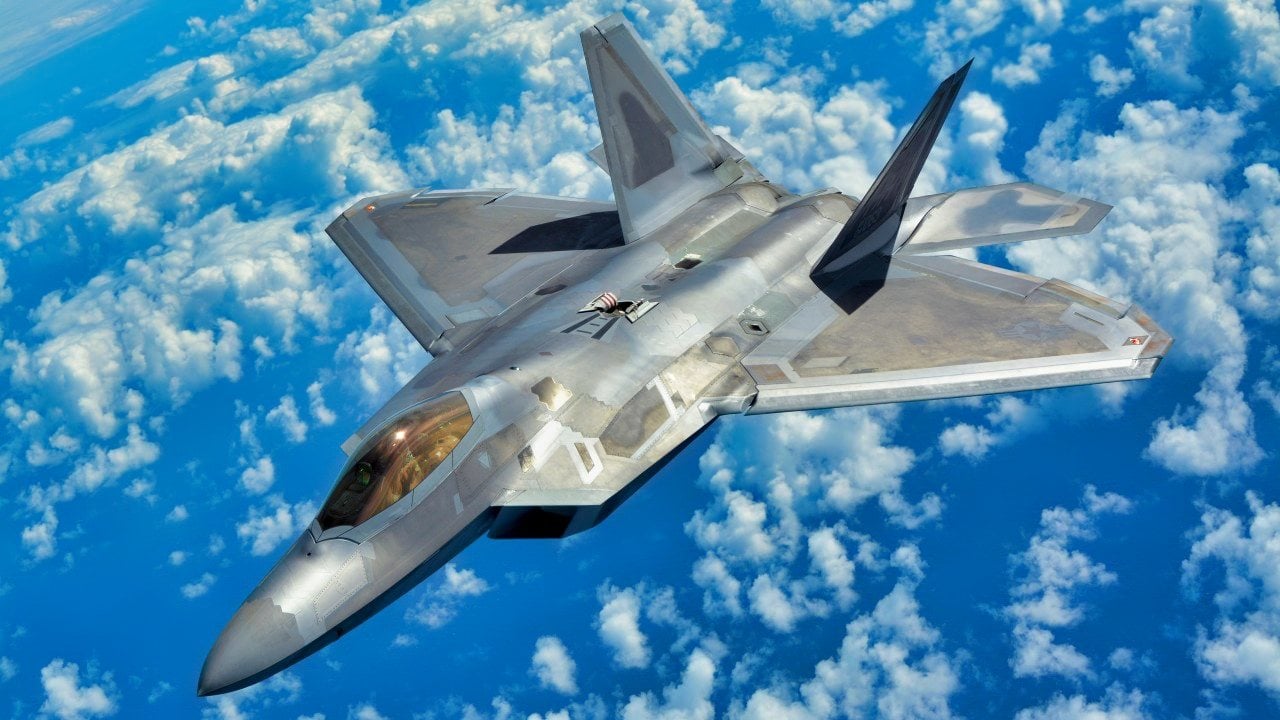What Is the Top Speed of the F-22 Raptor Fighter?

Summary and Key Points: The Lockheed Martin F-22 Raptor, the world’s first operational fifth-generation fighter, remains a pinnacle of air superiority, maneuverability, and advanced flight characteristics even 30 years after its debut.

-The F-22's speed varies by altitude, reaching Mach 1.21 (921 mph) at sea level and Mach 2.25 (1,500 mph) at higher altitudes.
-While not the fastest aircraft ever built, the F-22's real advantage lies in its "supercruise" capability, which allows it to maintain supersonic speeds (above Mach 1.5) without using afterburner, thus conserving fuel and expanding its operational range.
-This feature, combined with the jet’s sleek aerodynamic design, advanced flight controls, and thrust vectoring, enables the F-22 to outmaneuver all current and projected aircraft, making it a dominant force in aerial combat.
The F-22 Raptor Is One Very Special Fighter Jet
The Lockheed Martin F-22 Raptor is a modern marvel. The world’s first operational fifth-generation fighter, the F-22 was well ahead of its time when it debuted, during the Advanced Tactical Fighter (ATF) contract bid in the early 1990s. Even today, thirty years later, the F-22 is cutting-edge with respect to air superiority, maneuverability, and certain flight characteristics. And as one might expect, the F-22 is quite fast.
How Fast is the F-22?
The speed of the F-22 depends upon the altitude. At sea level, where air molecules are packed more tightly, and the friction (resistance) between an airframe moving through those molecules is higher, the F-22 can reach speeds of Mach 1.21, or 921 miles per hour – a respectable speed, albeit nothing to write home about. At higher altitudes, however, where the air molecules are spaced more loosely, and airframes can move without generating as much friction (resistance), the F-22 can hit Mach 2.25, or 1,500 miles per hour.
Respectable, indeed, but hardly the 4,520 miles per hour that the North American X-15 was able to hit, or even the 2,192 miles per hour that the SR-71 was able to hit. No, the F-22 was not built to be a pure speedster. Whereas the X-15 was built to push speed and altitude envelopes, and whereas the SR-71 was built to be fast enough to outrun surface-to-air missiles, the F-22 needed only to be fast enough to effectively intercept adversary aircraft.
What’s more impressive about the F-22, rather than the jet’s raw speed, is the 'super cruise' feature. “The F-22 engines produce more thrust than any current fighter engine,” according to the US Air Force website. “The combination of sleek aerodynamic design and increased thrust allows the F-22 to cruise at supersonic airspeeds (greater than 1.5 Mach) without using afterburner – a characteristic known as supercruise.”
The benefit of supercruise is that it allows the F-22 to expand its “operating envelope in both speed and range over current fighters, which must use fuel-consuming afterburner to operate at supersonic speeds.”
The afterburner, as the name implies, is when fuel is injected directly into an engine’s exhaust flume, causing a secondary ignition that increases thrust and speed. However, spitting fuel directly into the exhaust plume is atrocious for fuel economy – which can be hazardous for an air superiority fighter, who needs to have enough fuel to engage with a target once the target is engaged. If the F-22 were to use all of its fuel in pursuing a target, then the F-22 wouldn’t be as effective in engaging with that target – it would defeat the entire purpose of the airframe.

Once the F-22 uses supercruise to arrive on target, the jet’s real asset becomes relevant: maneuverability. “The sophisticated F-22 aero design, advanced flight controls, thrust vectoring, and high thrust-to-weight ratio provide the capability to outmaneuver all current and projected aircraft,” the US Air Force boasts.
Indeed, as anyone who has ever caught the F-22 at an airshow can attest, the F-22 is uniquely maneuverable, capable of pulling “trick” stunts that you’re unlikely to see in another American-made fighter.
About the Author: Harrison Kass
Harrison Kass is a defense and national security writer with over 1,000 total pieces on issues involving global affairs. An attorney, pilot, guitarist, and minor pro hockey player, Harrison joined the US Air Force as a Pilot Trainee but was medically discharged. Harrison holds a BA from Lake Forest College, a JD from the University of Oregon, and an MA from New York University. Harrison listens to Dokken.
Image Credit: Creative Commons and/or Shutterstock.
